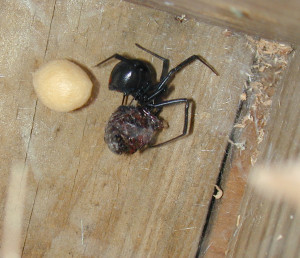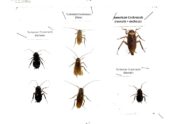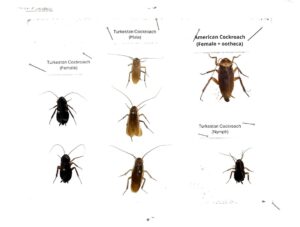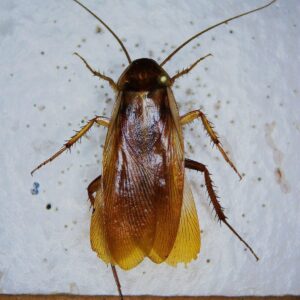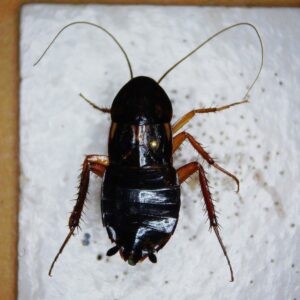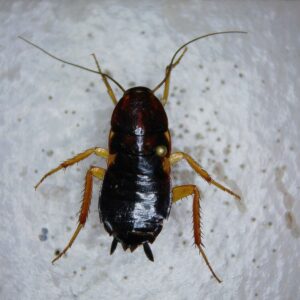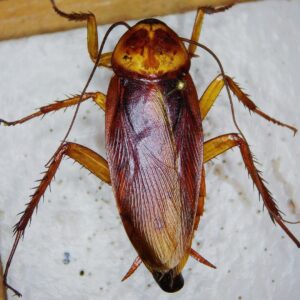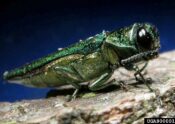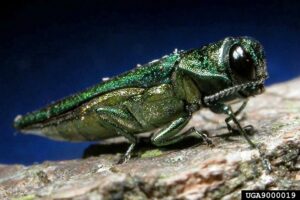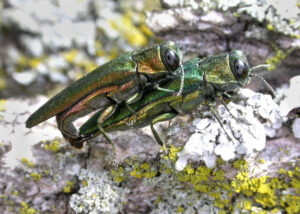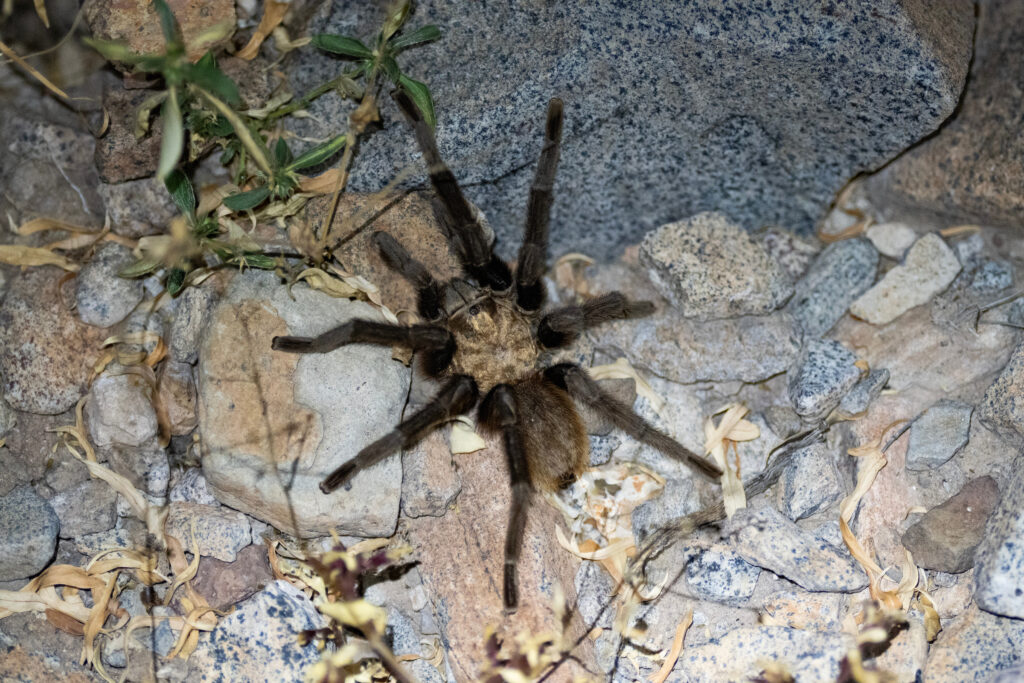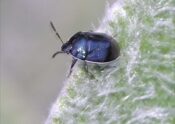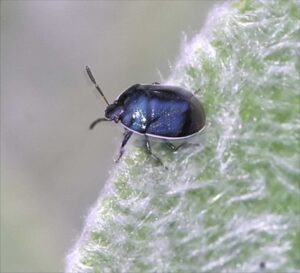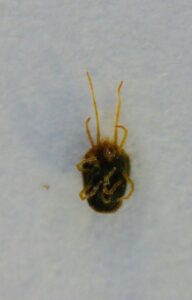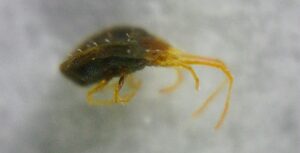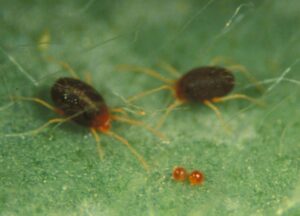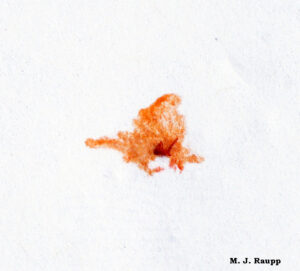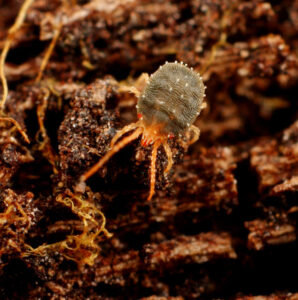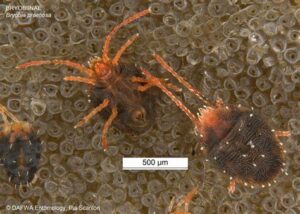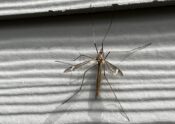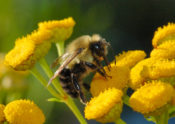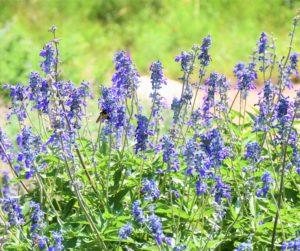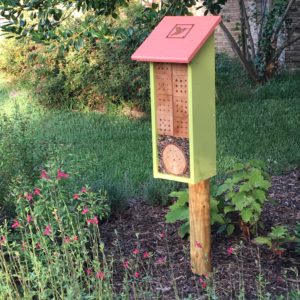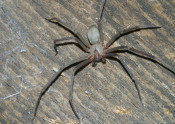
Creepy crawlies like spiders enjoy lurking in cool, dark places and may even contribute to your Halloween decor, but they are nuisances in many households. Although these 8-legged arthropods are typically unwanted, they are beneficial to the environment as they feed on insects and other arthropods contributing to the balance of nature. There are over 900 species of spiders, but only a few are hazardous to humans, such as widow and recluse spiders. While black widows are well-known throughout the United States, people may be less familiar with the brown widow spider as it has recently been introduced into the U.S.
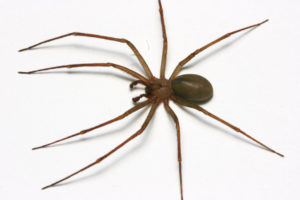
Brown recluse spiders range in color from tan to gray. Long, slender legs and brown violin shaped mark on the head are distinguishing features.
Female black widow spiders are jet-black with a distinctive red hourglass shape on the underside of her abdomen. Male black widow spiders are small and brown. It is more common to see a female black widow spider because she will eat her male mate after mating, thus the “widow” name. Black widow spider bites can feel like a pin prick and may not even be noticed. Symptoms include tremors, nausea, vomiting, leg cramps, abdominal pains, profuse perspiration, loss of muscle tone, a rise in blood pressure, and breathing difficulties.
According to the Texas Department of State Health Services, black widow venom is 15 times more toxic than the venom of the prairie rattle snake. These spiders are commonly found in woodpiles, boxes, meter boxes, and many other undistributed areas.
Brown recluse spiders are golden brown and can be identified by a dark fiddle-shaped pattern near their head, giving them their colloquial name “fiddleback spiders.” Venom from the brown recluse has necrotizing enzymes that cause local or systemic reactions. The symptoms of a brown recluse spider bite are different from those of a black widow spider bite, including fever, chills, necrosis, and red, white and blue lesions at the bite site. These different symptoms can be attributed to the differences in venom make-up from spider to spider.
Black widow venom is a neurotoxin while brown recluse venom has necrotizing enzymes, which cause skin cells to break down at a cellular level. Brown recluse spiders are typically found in garages, firewood piles, bathrooms, bedrooms, closets, corners, crevices, and anywhere that provides them with a snug fit be- tween plush surfaces.
Both widow spiders and recluse spiders tend to only bite when accidentally disturbed, trapped, or threatened. In structural settings, piles of clothes and wet towels tend to attract spiders, especially wandering spiders like the brown recluse. Prevention is the easiest and most effective way to control the presence of these hazardous spiders. Reducing the presence of bright outdoor lighting that attracts insects, trimming weeds from around buildings, sealing outside openings, removing spider webs, and shaking out shoes, clothes, towels, and linens that have been undisturbed for a long period are all good ways to prevent the chance of a spider bite and reduce the presence of these spiders. One of the best ways to manage spiders that have gained access to homes and structures is with sticky traps. While certain pesticides include spiders on their labels, integrated pest management practices are necessary for
Written by Miss Avery Brooks, AES Student Worker, Texas A&M University
